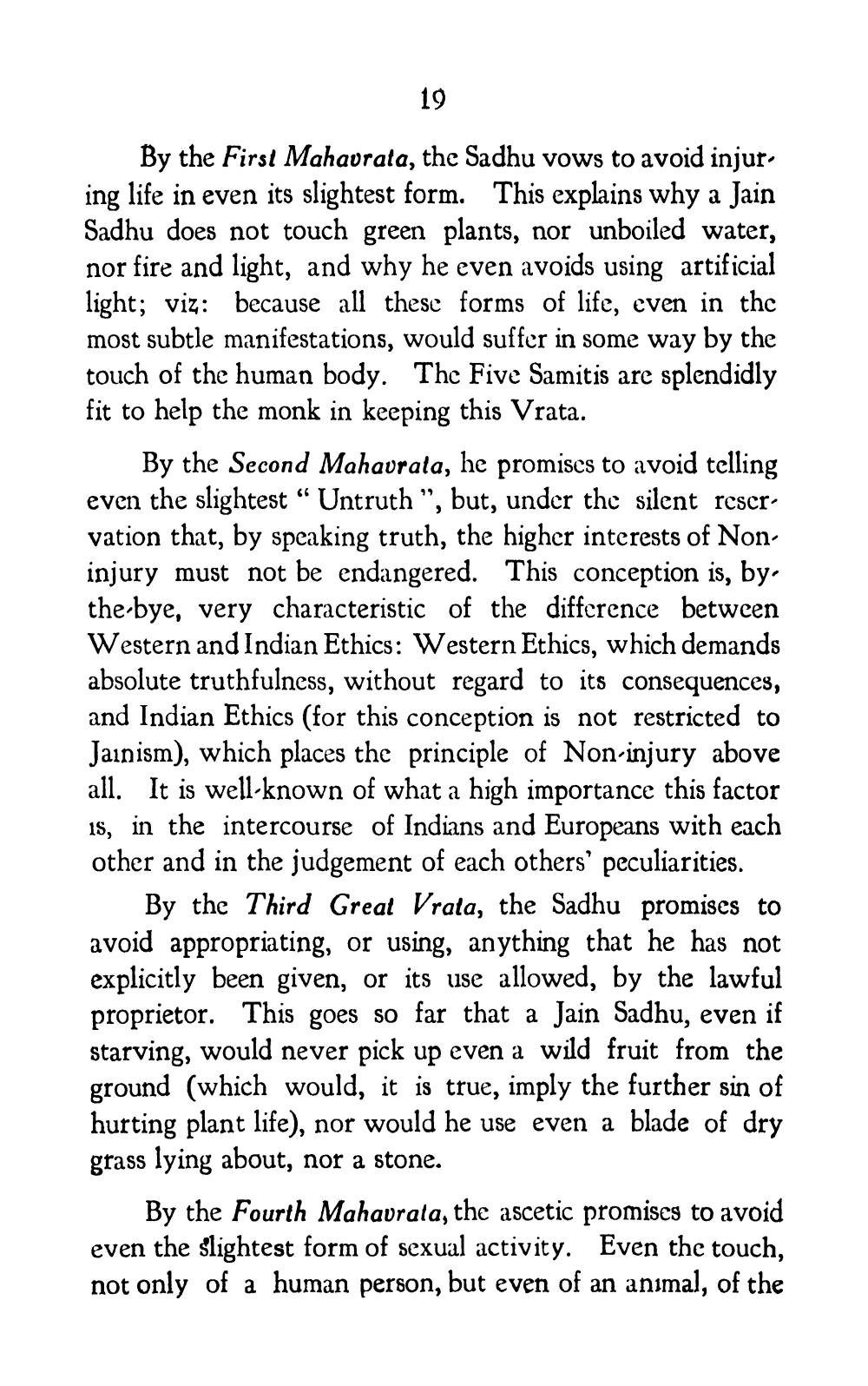________________
19
By the First Mahavrata, the Sadhu vows to avoid injur ing life in even its slightest form. This explains why a Jain Sadhu does not touch green plants, nor unboiled water, nor fire and light, and why he even avoids using artificial light; viz: because all these forms of life, even in the most subtle manifestations, would suffer in some way by the touch of the human body. The Five Samitis are splendidly fit to help the monk in keeping this Vrata.
By the Second Mahavrata, he promises to avoid telling even the slightest “ Untruth", but, under the silent rescrvation that, by speaking truth, the higher interests of Noninjury must not be endangered. This conception is, by the-bye, very characteristic of the difference between Western and Indian Ethics: Western Ethics, which demands absolute truthfulness, without regard to its consequences, and Indian Ethics (for this conception is not restricted to Jainism), which places the principle of Non-injury above all. It is well-known of what a high importance this factor is, in the intercourse of Indians and Europeans with each other and in the judgement of each others' peculiarities.
By the Third Great Vrata, the Sadhu promises to avoid appropriating, or using, anything that he has not explicitly been given, or its use allowed, by the lawful proprietor. This goes so far that a Jain Sadhu, even if starving, would never pick up even a wild fruit from the ground (which would, it is true, imply the further sin of hurting plant life), nor would he use even a blade of dry grass lying about, nor a stone.
By the Fourth Mahavrala, the ascetic promises to avoid even the slightest form of sexual activity. Even the touch, not only of a human person, but even of an animal, of the




